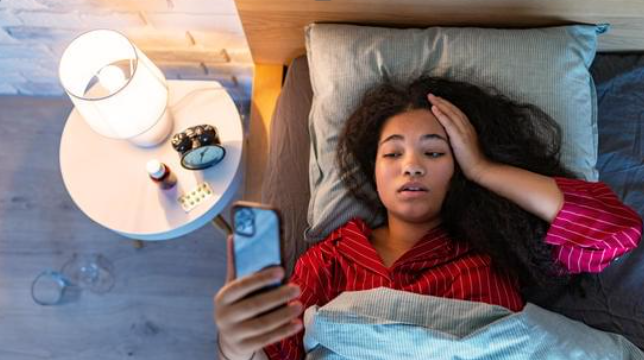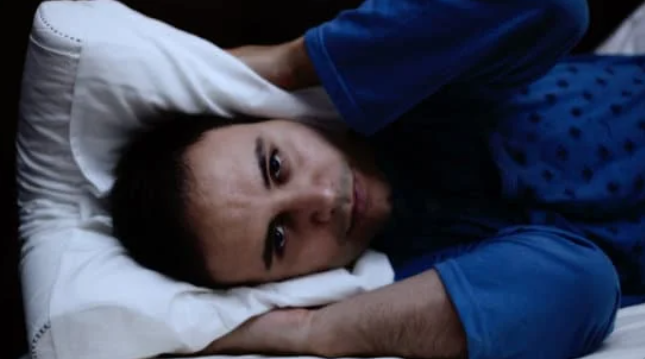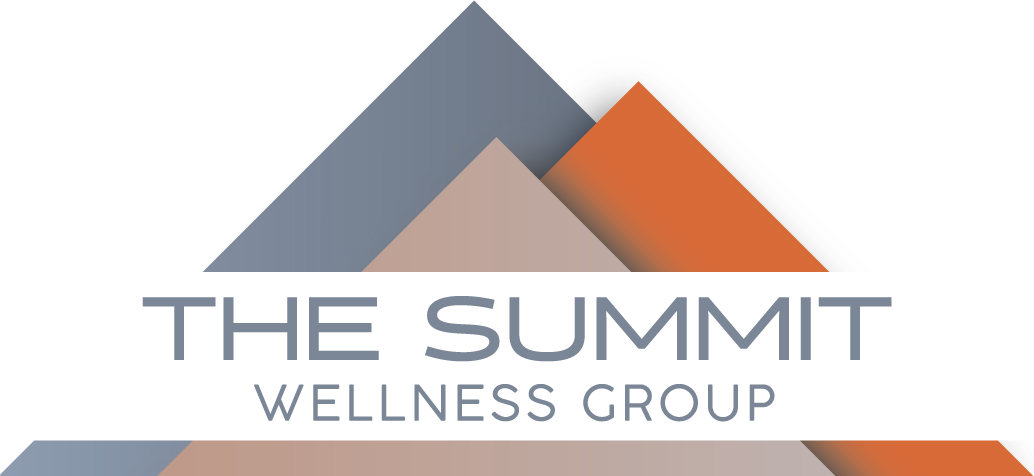Sleep problems after drug addiction make recovery harder, with insomnia persisting for months or years after withdrawal.
New research shows that when recovery medications matter for protecting sleep, screening tools can predict who needs sleep testing, morning dosing often beats bedtime dosing for adherence, and behavioral therapy outperforms sleep pills in sustaining recovery.
This article explains how to time medications to restore sleep safely, which treatments work best at each recovery stage, and when professional sleep care becomes essential.
Sleep and Addiction Recovery: Why Timing Matters?
Sleep disturbances touch every stage of recovery, from the acute withdrawal phase through years of abstinence. Insomnia ranks among the most common and stubborn symptoms reported across alcohol, opioid, stimulant, and cannabis use disorders. These sleep problems do more than cause fatigue. They increase relapse risk, reduce treatment engagement, and in opioid-treated patients, can signal dangerous breathing problems during sleep that raise overdose risk.
Despite the clear connection between poor sleep and worse outcomes, many addiction programs lack structured ways to diagnose and treat clinically significant sleep disorders. New 2025 guidelines and recent evidence now provide a roadmap for when and how to adjust medication timing, which sleep therapies work best, and how to screen for hidden breathing disorders that medication timing alone cannot fix.
The core insight: protecting sleep in early recovery requires matching the right intervention to the right sleep problem at the right time, while always prioritizing safety and adherence over theoretical benefits.
How Sleep Problems Change From Withdrawal to Long-Term Recovery?
Understanding the difference between acute and protracted sleep disturbances helps clinicians and patients choose appropriate interventions.
Acute Withdrawal Phase
During the first days to weeks after stopping substances, rapid neurochemical changes drive fragmented, inefficient sleep. Alcohol or opioid withdrawal often produces autonomic instability, increased sleep latency, and reduced REM sleep. Stimulant withdrawal can swing between hypersomnia and insomnia. Cannabis withdrawal commonly triggers insomnia as a prominent symptom.
In this acute window, sleep is often severely disrupted but begins improving as the body rebalances. Safety is paramount: screening for respiratory depression in opioid contexts, managing agitation without adding dependence-forming sedatives, and stabilizing circadian rhythms.
Protracted Abstinence
Sleep problems frequently persist or evolve months to years after acute withdrawal ends. Chronic insomnia, irregular sleep-wake timing, and undiagnosed sleep-disordered breathing can linger, impairing mood, self-control, and craving regulation. For patients on long-term opioid therapy, central sleep apnea risk increases with dose. In alcohol use disorder, irregular sleep timing after inpatient treatment predicts relapse during the vulnerable first month home.
This protracted phase calls for durable, evidence-based therapies rather than quick fixes—structured behavioral treatment for insomnia, formal diagnosis of breathing disorders, and careful medication choices that do not trade one dependence for another.
Screening for Hidden Sleep Disorders in Recovery
Many patients on addiction recovery medications, particularly opioids, carry undiagnosed sleep apnea. Identifying these cases early improves safety and outcomes.
Predicting Sleep Apnea in Opioid-Treated Patients
A large multicenter study of patients on chronic opioid therapy found that 59% had sleep apnea, with central sleep apnea making up one-fifth of cases. Specific predictors stood out: each 10 mg increase in daily morphine milligram equivalents raised central apnea risk by 3%, and each 1% drop in resting daytime oxygen saturation increased risk by 45%. For moderate-to-severe sleep apnea overall, each point higher on the STOP-Bang questionnaire raised odds by 70%, and lower oxygen saturation again predicted higher risk.
These simple, clinic-ready measures—STOP-Bang score, fingertip oxygen reading, and opioid dose—allow programs to triage who needs formal sleep testing without waiting for dangerous symptoms to appear.
When to Order Sleep Testing
Consider polysomnography for patients on opioids when STOP-Bang scores reach 3 or higher, resting oxygen saturation drops to 94% or below, or daily opioid doses exceed 90 morphine milligram equivalents. Home sleep testing offers a pragmatic alternative when access to in-lab studies is limited, using consistent severity thresholds to guide treatment without sacrificing diagnostic accuracy.
For patients in early alcohol recovery, tracking sleep regularity through simple diaries or wearable devices can flag relapse risk before lapses occur.
Medication Timing: Morning Versus Bedtime Dosing
Conventional wisdom once suggested taking medications at bedtime to match the body’s nighttime rhythms. Recent large trials challenge that assumption for many recovery medications.
The Adherence Problem With Bedtime Dosing
Three major studies—TIME, BedMed, and BedMed-Frail—tested whether shifting once-daily medications to bedtime improved cardiovascular outcomes. None found benefit, and morning dosing improved adherence substantially: only 23% of morning-dose patients were nonadherent versus 39% in the evening-dose group. When patients forget or skip doses, theoretical pharmacologic advantages evaporate.
This adherence gap matters in addiction recovery, where consistency in taking medications for opioid use disorder, co-occurring conditions, or withdrawal management directly affects relapse risk and safety.
When Bedtime Dosing May Help
Selective bedtime dosing makes sense in specific scenarios: confirmed nighttime blood pressure elevation on 24-hour monitoring, specific drug combinations proven to lower nighttime levels without increasing side effects, and structured support to maintain adherence. One study using a fixed olmesartan-amlodipine combination reduced nighttime blood pressure more with bedtime dosing and preserved equal adherence through fixed scheduling and reinforcement.
The key is not to default to bedtime dosing, but to personalize it when testing confirms a need and the patient can stick with the plan.
Chronotype and Individual Timing
Emerging evidence suggests personal sleep-wake preferences—whether you are naturally a morning or evening person—may influence both medication adherence and outcomes. Morning chronotypes in one sleep apnea study showed better treatment adherence independent of other factors, suggesting alignment with internal biology matters. However, shifting medication times should not sacrifice adherence; for most patients, simple once-daily morning routines anchor adherence better than trying to match circadian nuance.

Best Sleep Treatments for Addiction Recovery
Effective sleep care in recovery emphasizes nonaddictive, evidence-based strategies that improve insomnia while supporting sobriety:
Cognitive Behavioral Therapy for Insomnia: The Gold Standard
CBT-I is first-line treatment for chronic insomnia, including in addiction populations. This structured, short-term therapy teaches skills to improve sleep without medications: stimulus control to re-associate the bed with sleep, sleep restriction to consolidate fragmented sleep, cognitive strategies to reduce worry, and sleep hygiene education.
Multiple trials show CBT-I works in people with substance use disorders and can enhance adherence to other recovery treatments. Importantly, CBT-I helps patients break the self-medication cycle—using alcohol, cannabis, or non-prescribed sedatives to force sleep—by giving them alternative, durable tools.
Digital CBT-I programs expand access when in-person therapy is unavailable, though therapist-guided formats consistently outperform self-help alone.
Medications: Safer Alternatives to Traditional Sleep Pills
When behavioral therapy alone is insufficient, medication choice becomes critical in addiction contexts.
Avoid long-term benzodiazepines and Z-drugs. Benzodiazepine receptor agonists carry dependence risk, worsen respiratory depression when combined with opioids, and lose efficacy over time. Regulatory warnings underscore overdose and mortality risks when benzodiazepines mix with opioids.
Prefer dual orexin receptor antagonists (DORAs). Newer medications like suvorexant and lemborexant block wake-promoting brain signals without acting on the same receptors as benzodiazepines. Evidence in psychiatric populations shows promise with lower abuse potential, positioning DORAs as preferred options when CBT-I proves insufficient and traditional sedatives pose unacceptable risks.
Use low-dose doxepin or ramelteon. These agents improve sleep initiation and maintenance with minimal abuse potential and less respiratory risk than benzodiazepines, making them suitable bridge options in early recovery.
Treating Sleep-Disordered Breathing in Recovery
Addressing sleep apnea during recovery is crucial for safety and adherence, with tailored approaches for opioid-related central apnea and obstructive sleep apnea:
Central Sleep Apnea in Opioid Use
Opioids blunt the brain’s drive to breathe, producing central apneas—pauses where the brain temporarily stops signaling the lungs to inhale. Higher doses amplify this risk. New 2025 guidelines from the American Academy of Sleep Medicine recommend CPAP or bilevel positive airway pressure with a backup rate for central sleep apnea due to medications or substances.
Identifying and treating opioid-related central apnea improves nighttime oxygen levels, reduces daytime sleepiness, and lowers overdose risk by preventing cumulative hypoxemia.
Obstructive Sleep Apnea Management
Standard continuous positive airway pressure therapy remains the cornerstone for obstructive sleep apnea. When patients also have insomnia—common in addiction populations—combining CPAP with behavioral sleep therapy significantly improves adherence. Studies show that therapist-guided CBT-I delivered before or alongside CPAP increases acceptance and nightly use by an hour or more compared to usual care.
Self-help books for insomnia do not work in these contexts; active coaching matters.
Sleep Regularity and Relapse Risk
Beyond sleep duration and quality, the consistency of sleep timing itself predicts recovery outcomes.
Alcohol Recovery and Sleep Schedules
A study tracking people for 28 days after discharge from inpatient alcohol treatment found that those with lower sleep regularity—varying bedtimes and wake times from day to day—had higher relapse rates, even when controlling for total sleep and other factors. The implication: programs should explicitly coach patients to anchor consistent sleep-wake schedules as a relapse prevention strategy, not just as a sleep hygiene nicety.
Practical steps include setting a fixed wake time every day (even weekends), scheduling evening wind-down routines, and using morning light exposure to stabilize the internal clock.
Cross-Substance Considerations
| Substance | Sleep Disturbances | Relapse Links | Priority Interventions |
| Alcohol | Insomnia, irregular timing, fragmented sleep | Lower sleep regularity predicts relapse | Stabilize schedules; CBT-I; avoid sedatives long-term |
| Opioids | Central apnea, obstructive apnea, insomnia | Breathing problems increase overdose risk | Screen with STOP-Bang and oxygen; treat apnea; optimize medication dose |
| Stimulants | Hypersomnia and insomnia cycling | Sleep chaos impairs executive control | Behavioral sleep interventions; circadian regularity |
| Cannabis | Withdrawal insomnia | Sleep problems prolong withdrawal discomfort | CBT-I; cautious pharmacotherapy (prefer non-benzodiazepines) |

Technology and Support for Adherence
Digital tools and motivational strategies can bridge gaps when in-person support is limited, but results are mixed.
Some interventions—audio-visual reminder caps, structured educational text messages, and telephone-linked self-reporting—have improved medication adherence in trials. However, most technology approaches do not improve clinical outcomes unless paired with human coaching, simplified regimens, or meaningful feedback loops. Smart packaging alone rarely changes behavior; what works is marrying the technology to sustained engagement and troubleshooting.
Motivational interviewing delivered by clinicians or trained peers consistently enhances adherence to both medications and device-based treatments like CPAP. Early, brief interventions that build patient self-efficacy and address barriers work better than passive educational handouts.
Safety Guardrails When Adjusting Medication Timing
Shifting when patients take medications carries risks that must be actively managed.
Drug Interactions and Nighttime Hypotension
Moving blood pressure or psychiatric medications to bedtime can drop nighttime blood pressure too low, especially in older adults or those on multiple medications. Patients with glaucoma face particular risk because low nighttime pressure may worsen optic nerve damage. Before making timing changes, clinicians should review all medications for interactions and consider 24-hour blood pressure monitoring to confirm safety.
Clinical Decision Support Systems
Health systems implementing personalized dosing-time strategies benefit from interoperable clinical decision support that flags high-severity drug interactions, contraindications like glaucoma or fall risk, and adherence concerns at the point of prescribing. Standards-based alerts that surface only actionable, high-priority warnings reduce alert fatigue and improve clinician uptake without slowing workflows.
A Practical Framework for Medication Timing and Sleep
Personalizing medication timing to protect sleep follows a stepwise process:
- Screen for sleep problems using brief questionnaires and, in opioid-treated patients, STOP-Bang and oxygen saturation.
- Test when indicated with home or lab polysomnography if screening suggests sleep apnea.
- Start with behavioral therapy such as CBT-I for insomnia before adding or changing medications.
- Choose safer pharmacotherapy when needed, favoring DORAs, low-dose doxepin, or ramelteon over benzodiazepines.
- Default to morning dosing for once-daily medications to maximize adherence unless testing shows a specific nighttime problem and the patient can maintain adherence with evening dosing.
- Treat breathing disorders with positive airway pressure per current guidelines, combining it with insomnia therapy when both conditions coexist.
- Coach sleep regularity explicitly, especially in early alcohol recovery, using consistent wake times and evening routines.
- Monitor safety for nighttime low blood pressure, falls, drug interactions, and adherence during any timing change.
This approach balances biology, behavior, and safety—personalizing care only when it genuinely improves outcomes, not for the sake of complexity.
Why Does It Matter?
Sleep is not optional in addiction recovery. Fragmented, insufficient, or irregular sleep erodes the cognitive control, emotional stability, and physiological resilience needed to sustain abstinence. Medications timed poorly or chosen carelessly can worsen sleep, breed new dependencies, or mask dangerous breathing problems.
The evidence now points to a clear hierarchy: protect sleep first with behavioral interventions and safe medication choices, screen proactively for life-threatening sleep disorders in high-risk patients, and reserve dosing-time adjustments for the specific scenarios where they add value without sacrificing adherence.
Programs that embed routine sleep screening, prioritize CBT-I access, treat sleep-disordered breathing as standard in opioid care, and coach sleep regularity as relapse prevention are positioned to improve safety, reduce relapse, and support more durable recovery trajectories.
If sleep problems are complicating your recovery or a loved one’s, you do not have to navigate them alone. Our evidence-based treatment programs integrate sleep care with addiction therapy to address the whole person, not just the substance use.
